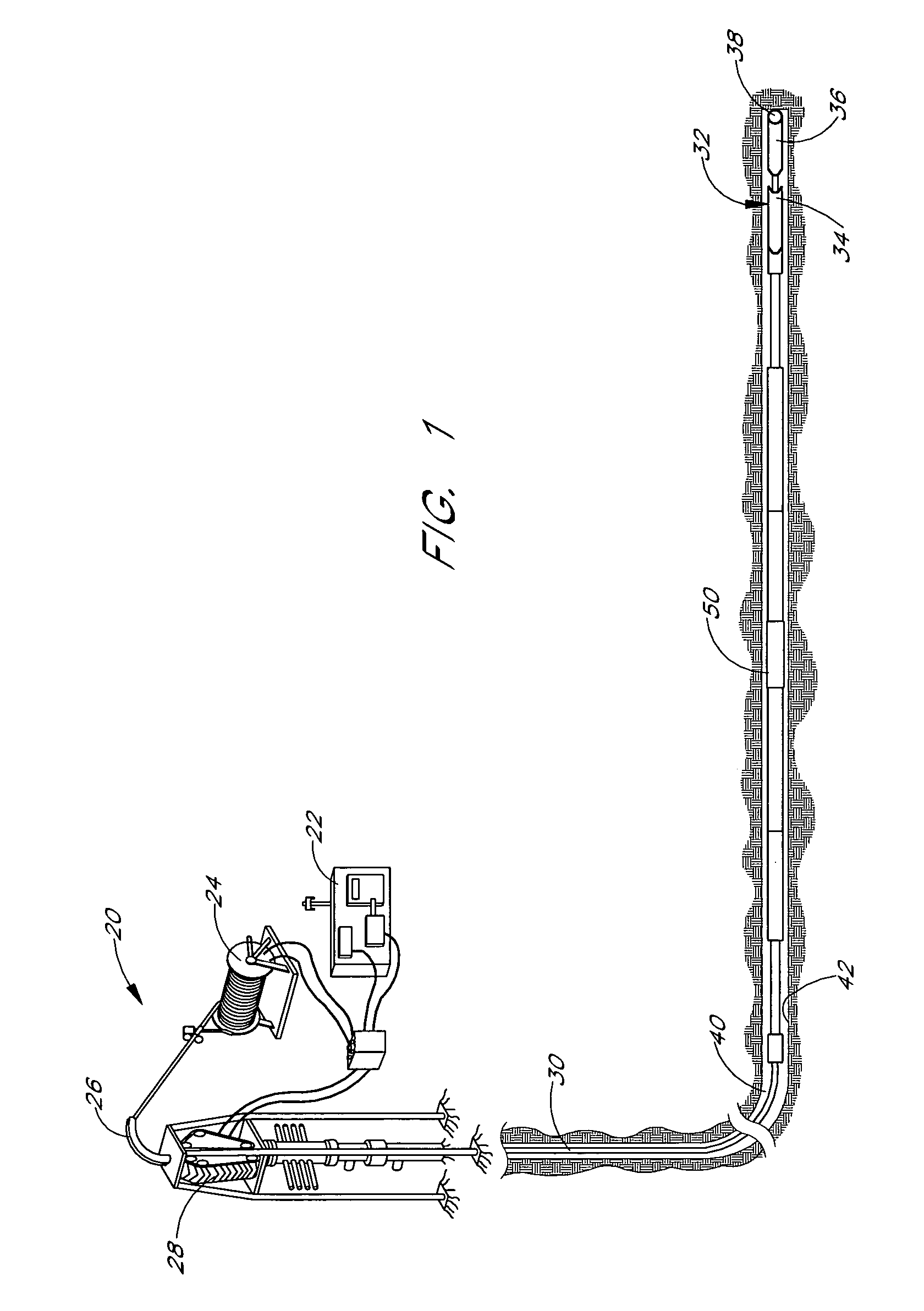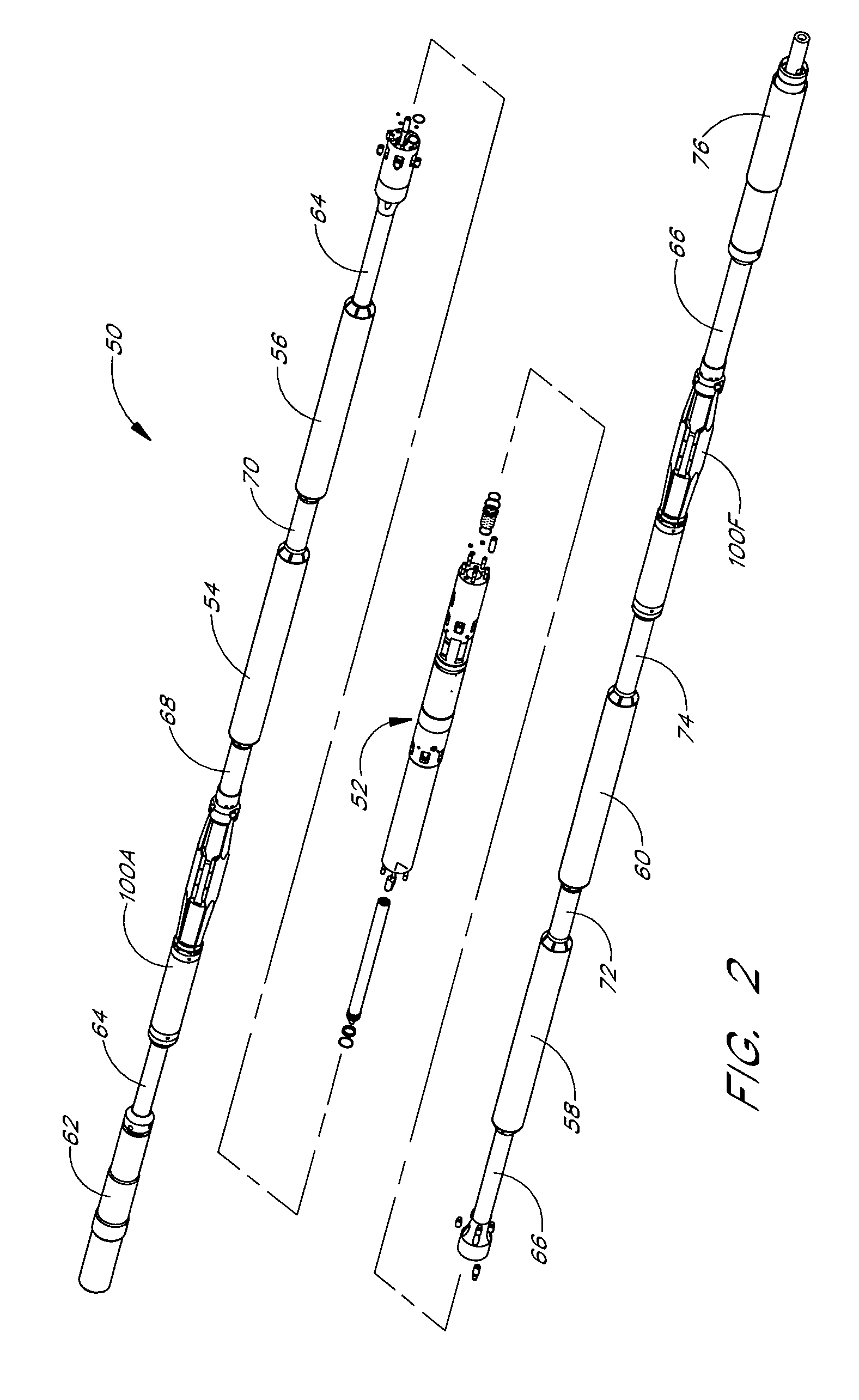Gripper assembly for downhole tools
a technology for tools and grippers, which is applied in the direction of drilling rods, drilling pipes, borehole/well accessories, etc., can solve the problems of large pressure drop in flow-by fluid, too large gripper designs to fit within the small dimensions of boreholes, and limited radial expansion capabilities, so as to achieve less effective and limited radial expansion loads
- Summary
- Abstract
- Description
- Claims
- Application Information
AI Technical Summary
Benefits of technology
Problems solved by technology
Method used
Image
Examples
Embodiment Construction
Coiled Tubing Tractor Systems
[0048]FIG. 1 shows a coiled tubing system 20 for use with a downhole tractor 50 for moving within a passage. The tractor 50 has two gripper assemblies 100 (FIG. 2) according to the present invention. Those of skill in the art will understand that any number of gripper assemblies 100 may be used. The coiled tubing drilling system 20 may include a power supply 22, tubing reel 24, tubing guide 26, tubing injector 28, and coiled tubing 30, all of which are well known in the art. A bottom hole assembly 32 may be assembled with the tractor 50. The bottom hole assembly may include a measurement while drilling (MWD) system 34, downhole motor 36, drill bit 38, and various sensors, all of which are also known in the art. The tractor 50 is configured to move within a borehole having an inner surface 42. An annulus 40 is defined by the space between the tractor 50 and the inner surface 42.
[0049]Various embodiments of the gripper assemblies 100 are described herein. ...
PUM
 Login to View More
Login to View More Abstract
Description
Claims
Application Information
 Login to View More
Login to View More - R&D
- Intellectual Property
- Life Sciences
- Materials
- Tech Scout
- Unparalleled Data Quality
- Higher Quality Content
- 60% Fewer Hallucinations
Browse by: Latest US Patents, China's latest patents, Technical Efficacy Thesaurus, Application Domain, Technology Topic, Popular Technical Reports.
© 2025 PatSnap. All rights reserved.Legal|Privacy policy|Modern Slavery Act Transparency Statement|Sitemap|About US| Contact US: help@patsnap.com



